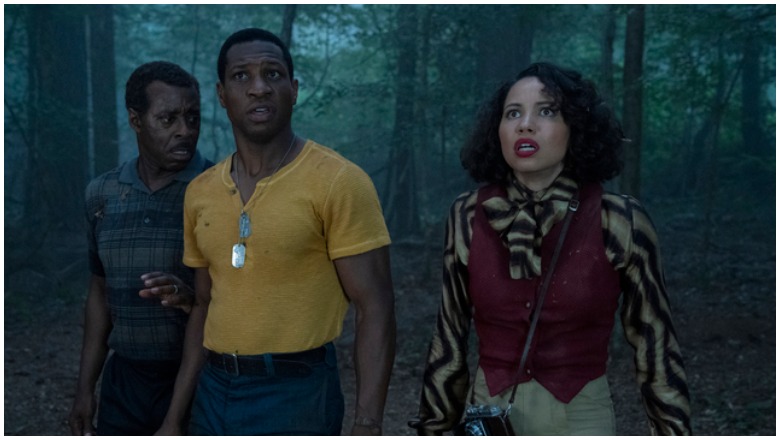
HBO Lovecraft Country
If you’re watching Lovecraft Country on HBO and are feeling really unsettled by the depiction of sundown towns and counties, then you’re not alone. The series takes place in the 1950s and the concept of “sundown towns” that you see in the premiere episode is based on real life.
By the Late 1960s, There Were More than 10,000 Sundown Towns in the United States
Sundown towns were very real. For example, in 1930, 44 out of the 89 counties that lined Route 66 were referred to as Sundown Towns that banned Black Americans from entering after dark, The Atlantic reported. And yes, there even were very visible, large signs that had racial slurs and warned passersby not to be in the town when the sun set. Illinois had almost 150 sundown towns in the state alone. In Lovecraft Country, the journey begins in Chicago.
Sundown towns were all over America. In California, Glendale and Culver City were sundown towns, Atlantic reported. In fact, HuffPost reported by the late 1960s, there were at least 10,000 sundown towns across the entire United States.
James W. Loewen runs a website about sundown towns, including a map that shows where every town once was located. Loewen is a sociologist and historian who wrote Lies My Teacher Told Me: Everything Your American History Textbook Got Wrong and Sundown Towns: A Hidden Dimension of American Racism.
Traveling was so terrifying back then that many Black drivers had cover stories, like wearing a chauffeur’s hat if they drove a nice car. The author of The Atlantic story, Candacy Taylor, wrote that her stepfather’s dad had to do just that when her stepfather was only a child. He had to pretend that his wife was his employer’s maid and he traveled with a chauffer’s hat just in case.
And yes, there was even a travel guide to help Black travelers know what locations were safe to visit, similar to what you see in Lovecraft Country.
In sundown towns, Black Americans were persecuted, evicted violently, and forced out, the CS Monitor reported. In Utica, local residents said they could remember seeing signs warning Black visitors to leave the town by sundown. A historian said there weren’t signs, but there was indeed a town ordnance. The racism in Utica has persisted into modern day, with the local high school even receiving letters that threatened violence if students were allowed to date interracially, CS Monitor reported.
An opinion letter written to The New York Times in 2009 by Loewen noted that some towns were still considered sundown towns where Black Americans were not welcome after dark. The letter goes on to say that between 1890 and 1940, some locations had entire counties that forced out Black Americans or would not let them within the country limits.
In an article published by UU World, Loewen wrote that sunset towns ranged in size from small populations of less than 200 to large cities with 57,000 residents, like Appleton, Wisconsin, in 1970. He wrote that some communities to this day remain all-white because of informally approved racist policies, like “driving while Black” violations, realtor shunning, and threats of violence.
READ NEXT: Where Was Hallmark’s Rome in Love Filmed?
Comments
Sundown Towns in Real Life: Yes Lovecraft Country’s Portrayal Really Happened